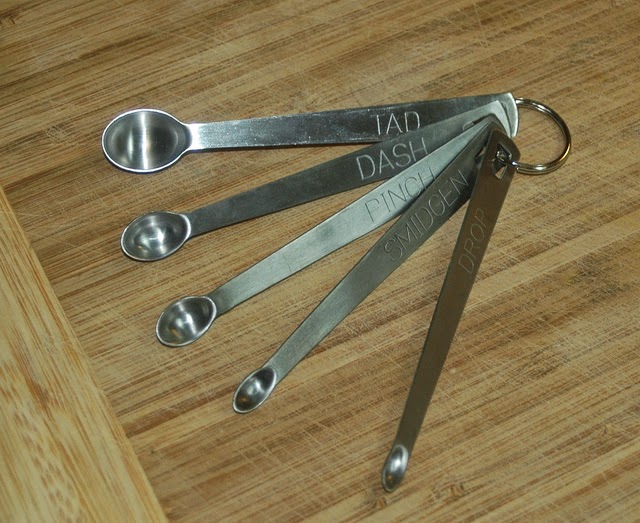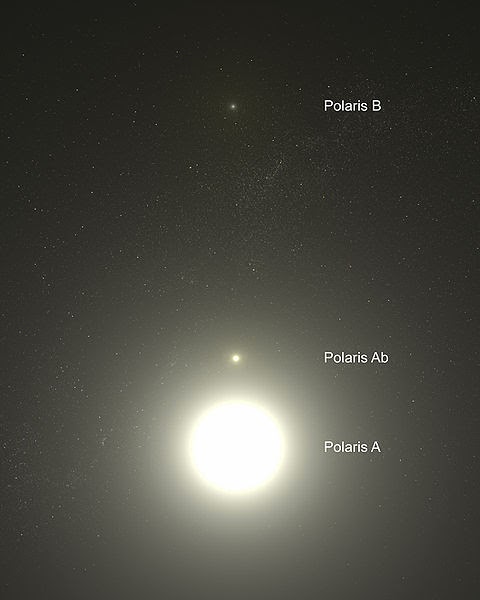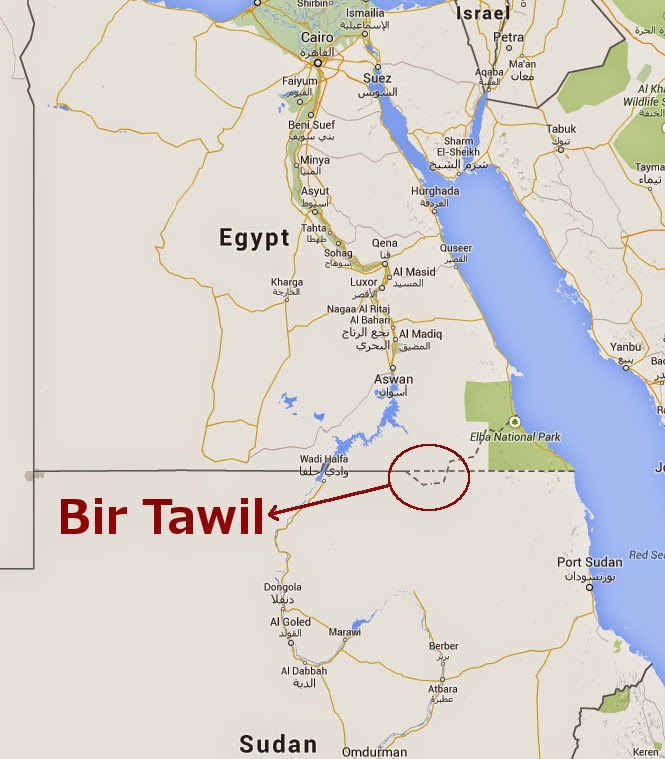 The weekly collection of useless and fun facts. In this week’s edition: Small Cooking Measurements, North Star, Unclaimed Land, Acid, and the Pope Hammer.
The weekly collection of useless and fun facts. In this week’s edition: Small Cooking Measurements, North Star, Unclaimed Land, Acid, and the Pope Hammer.
 |
| Wanna Be Creative/flickr |
We start this week’s edition with some facts that aren’t all that useless. It deals with cooking and measurement. In many cookbooks (especially the older ones), the recipes called for measurement of ingredients as a dash, a pinch, or a smidgen. What was a cook to do to know the difference between those amounts? Well help has arrived. Many companies are now selling measurement spoons with the exact amounts of these terms. The exact measurements are as follows: a “dash” is 1/8 teaspoon, a “pinch” is 1/16 teaspoon, and a “smidgen” is 1/32 teaspoon. There are two pinches in a dash and two smidgens in a pinch. There are even spoons measuring a “tad” and a “drop”, though I was unable to find the exact measurements of these. There’s even the elusive “dollop”, but it too doesn’t seem to have an exact measure. At least there seems to be agreement on what a “pinch”, “dash”, and “smidgen” are, so one of life’s great questions has been answered. You’re welcome.
The most well-known star by far is the north star, but it’s not really just one star in the night sky. Polaris, or the “North Star”, is actually a set of three stars that orbit a common center of mass. Polaris A is the primary star and has about six times the mass of our sun. It is considered a supergiant. 2 billion miles away is Polaris Ab, and even farther than that at 240 billion miles from Polaris A is Polaris B. These two companion stars are considered dwarf stars. Polaris A is a mere 430 light-years away from us, and is considered the 50th brightest star in the sky. To find the North Star, its easiest to locate the big dipper, one of the easier constellations to spot in the night sky. If you get to the bucket part of the big dipper (where water looks like it will pour out), there are two “pointer” stars called Merak and Dubhe. If you follow the line these stars make and continue out straight from that point, you’ll spot the North Star. If you get that far you’ve found the end of the handle to the little dipper.
Polaris is known as such a good navigational tool because it hardly moves as the other stars move around it. If you’re on the North Pole, you would see it directly overhead, and as you move south, you would see it drop to the horizon. It drops from view below the equator so it’s not that helpful for those in the Southern hemisphere. To use it to judge your position, face Polaris and stretch out your arms. Your right arm will be east, left arm will be left, and to your back will be south. It’s not the most accurate of measurements, but it might just get you to where you’ll need to go and it’s seemed to work okay for thousands of years.
There is an area of land between Egypt and Sudan that nobody wants and has been unclaimed by either nation. The 795 sq miles of land, called Bir Tawil, is the only piece of unclaimed land outside of Antarctica. Bir Tawil is mostly desert and mountains and has no appreciable natural resources. Both countries would rather have another disputed portion of land instead called Hala’ib. It has fertile soil and is a much larger area of land. But there’s a problem. An 1899 border treaty says Hala’ib is Egypt’s, while a 1902 treaty says it belongs to Sudan. This leaves Bir Tawil as an owner-less, unwanted piece of land. But there is one person who would gladly take it. In June of 2014, American Jeremiah Heton planted a flag there so his daughter could be a princess. Heton, along with his family, named it the Kingdom of North Sudan and wanted to make the land a scientific test site to improve global food security, as well as a server farm for the free exchange of information. It’s unknown if he’ll ever get it recognized by the international community, but at least he was able to make his 7 year-old daughter a princess. Read more about another area of occupied land that proclaims themselves the nation of Sealand.
Acids are dangerous, wondrous things. They help us dissolve food, make products, clean things; just about everything. But the strongest one could dissolve you in no time. Fluoroantimonic acid is the strongest super-acid known to man. It is 20 quintillion times more acidic than 100% sulfuric acid, and it can dissolve glass plus a host of other substances. This particular acid is used as a catalyst in chemical reactions for biochemistry, gasoline production, and the making of synthetic materials. It is made up of antimony, fluorine, and hydrogen. Once fluoroantimonic acid loses a proton, it begins to tear electrons from atoms.
The strength of this acid is remarkable, so then, how is it stored? It’s held by our friend that we know and love when cooking in a pan where we don’t want the food to stick. It’s Teflon, or polytetrafluoroethylene. It has the strongest single bond in organic chemistry between carbon and fluorine, making it have a very strong chemical structure. The containers containing the superacid have a coating of Teflon so that the acid won’t eat a hole through the container, the floor, your hand, etc, etc.
The death of the pope used to be confirmed by striking him on the forehead three times with a small silver hammer while calling out his name. Striking is probably not the most accurate of words, it was probably more of a tap, but the process was used for Pope Paul VI’s death in 1978. It may have been ceremonially done on the death of Pope John Paul. But as they did with Pope John Paul, they used an electrocardiogram to determine that the pope was indeed deceased. The Vatican also released the death certificate of the pope, something they had never done before. The silver hammer ceremony was always carefully laid out. Upon the pope’s death, there is one cardinal who becomes known as the Camerlengo of the Universal Church. He is in charge of the interim government of the church before a new pope is elected. The camerlengo is the one who uses the silver hammer on the pope. In the case of Pope Paul VI, the camerlengo had Vatican officials, two other cardinals, and Italian representatives watch as he tapped the forehead of the pope three times and said his name while asking if he was dead. With confirmation that the Pope is indeed dead, the camerlengo locks the private apartment of the pope, and the papal secretary draws up the death certificate. The camerlengo, who is now in charge of all Vatican affairs, along with a committee of cardinals, begin the summonings process that will bring all the cardinals to the Vatican to convene a conclave where the new pope will be elected.
I hope you enjoyed this edition of the Useless Facts of the Week. As always, remember to annoy those around you with your new found knowledge.
The condensed version of Issue 19 is below, and read other editions here.






